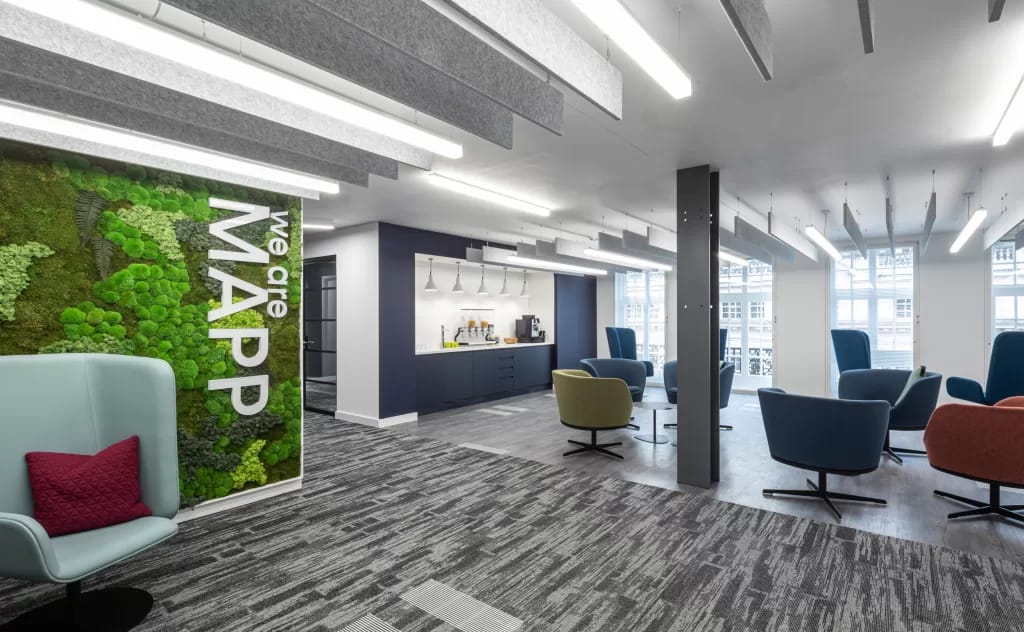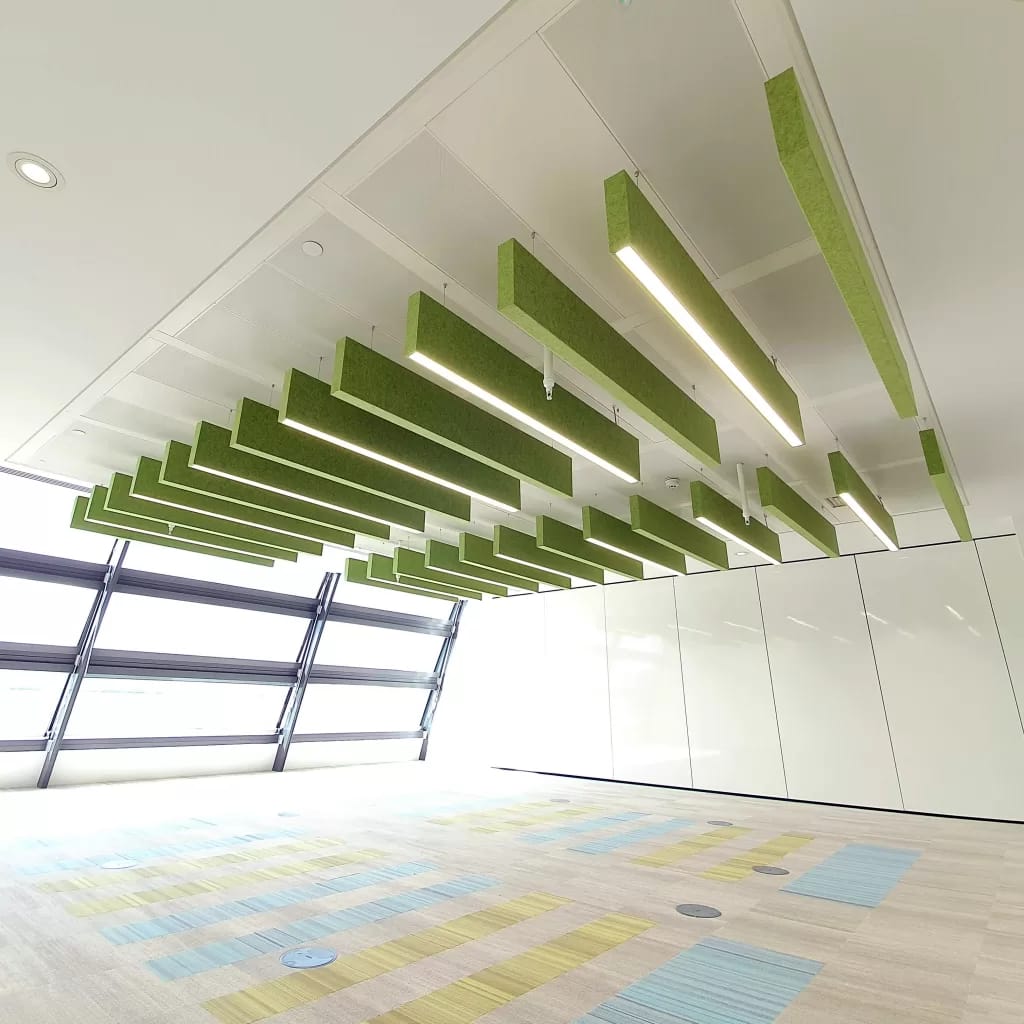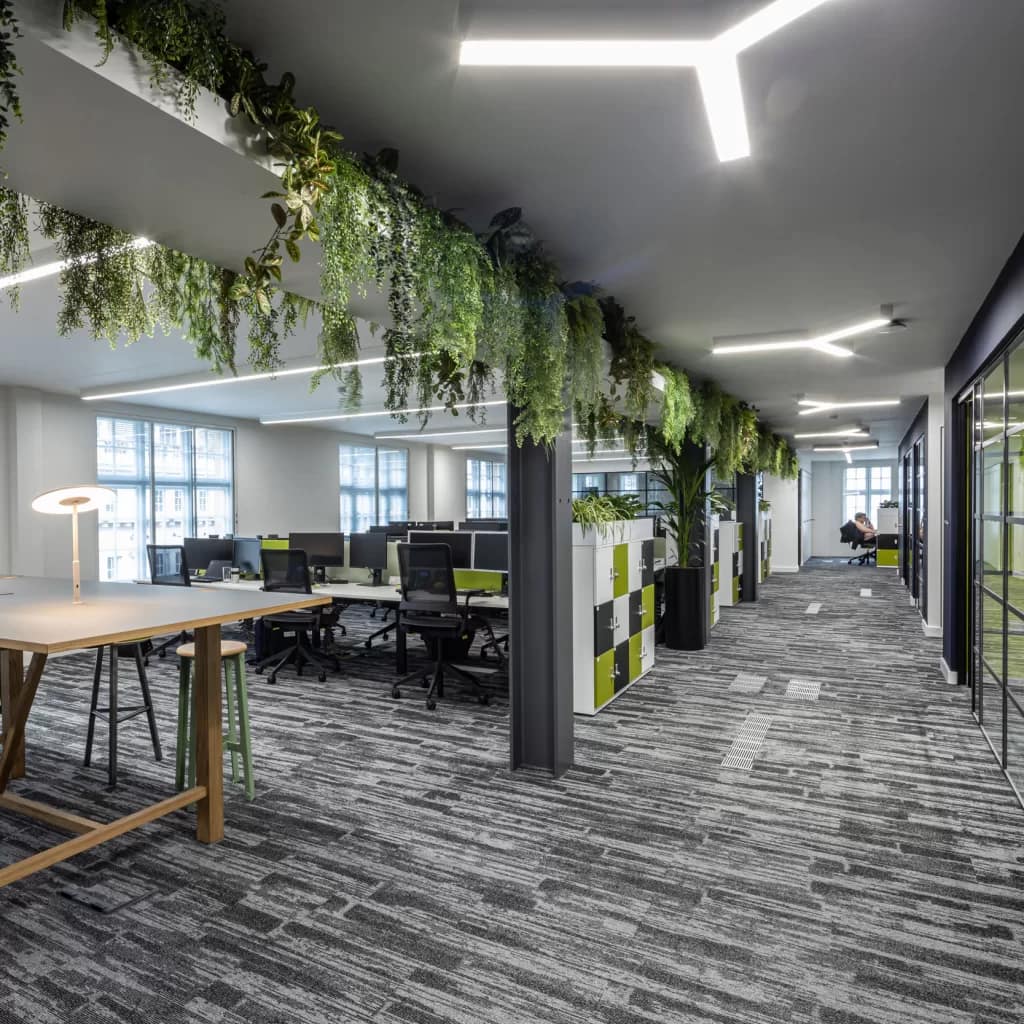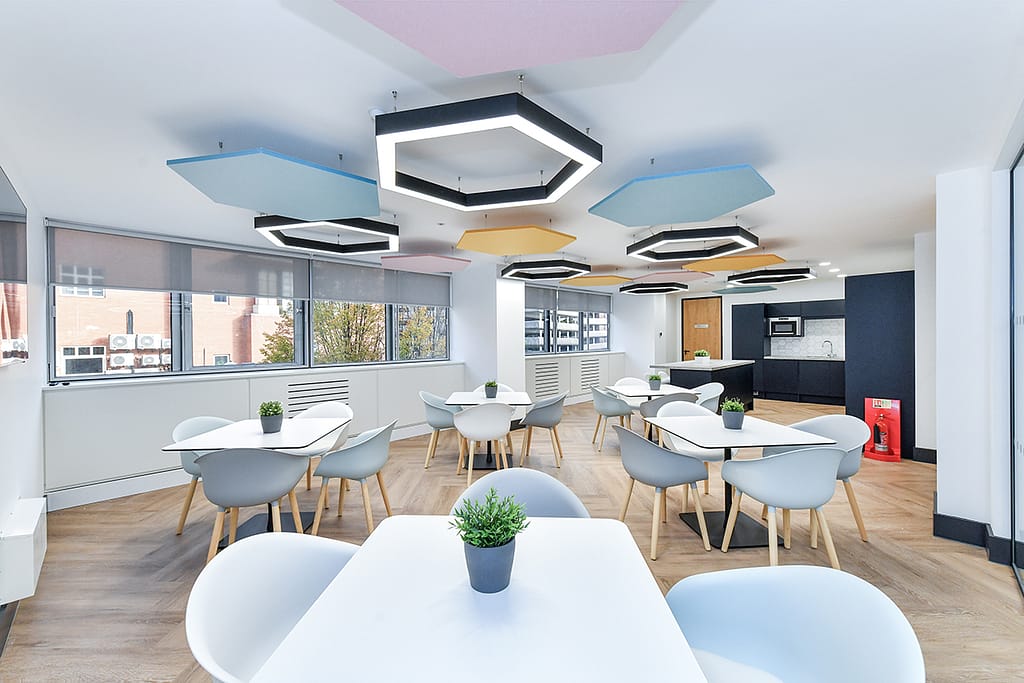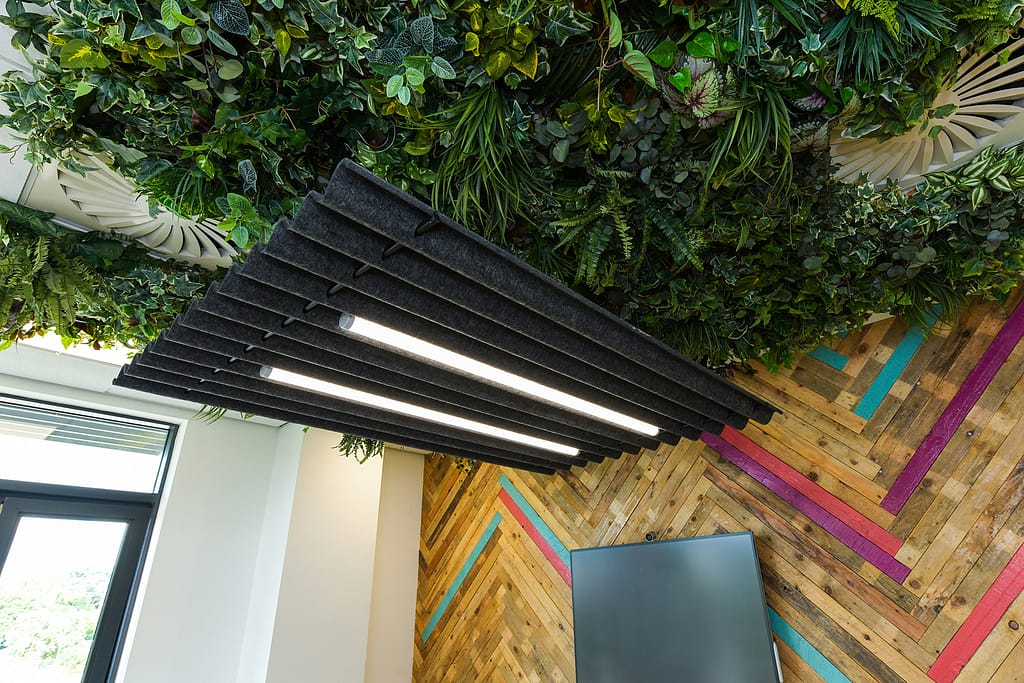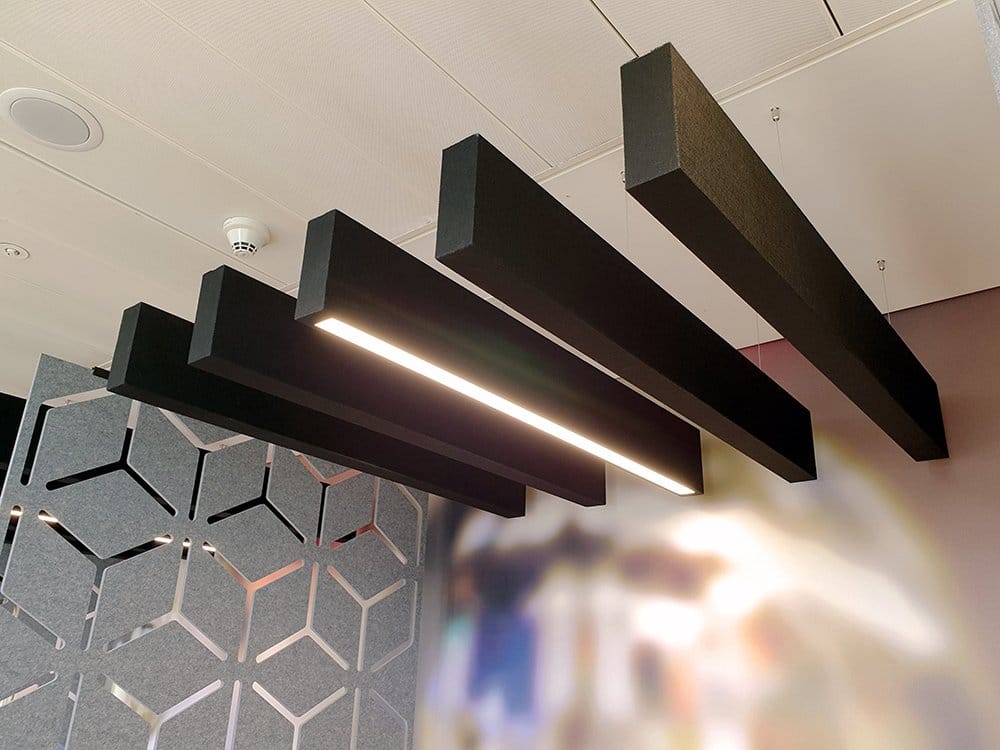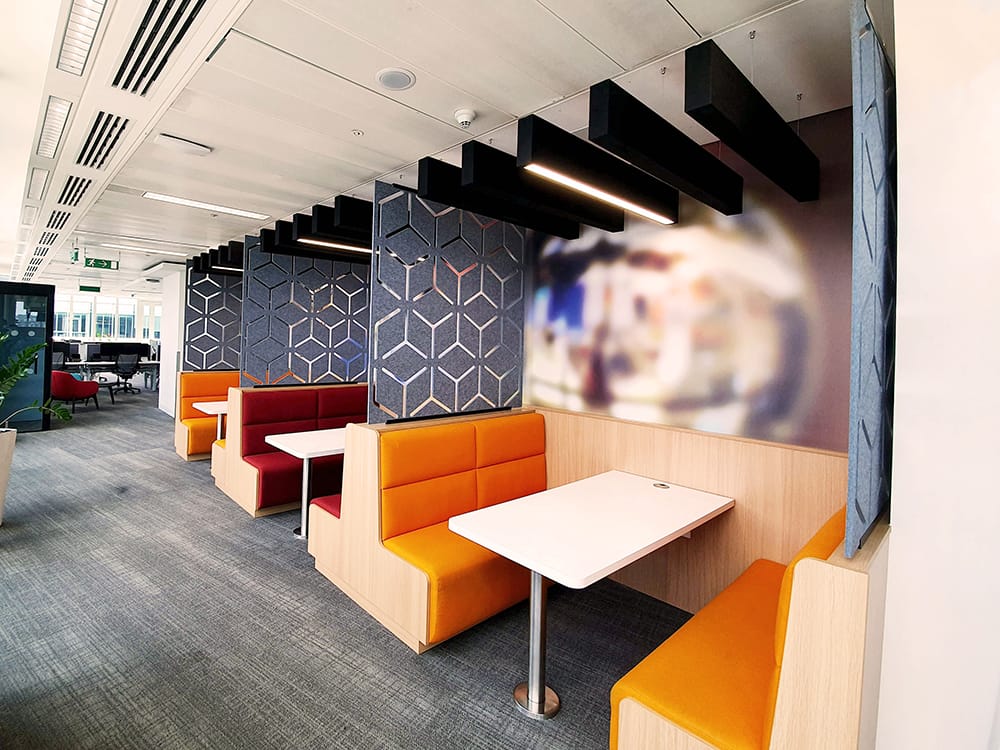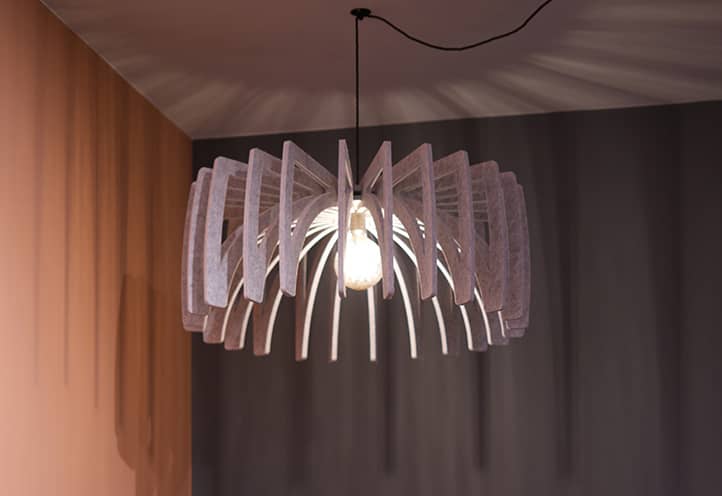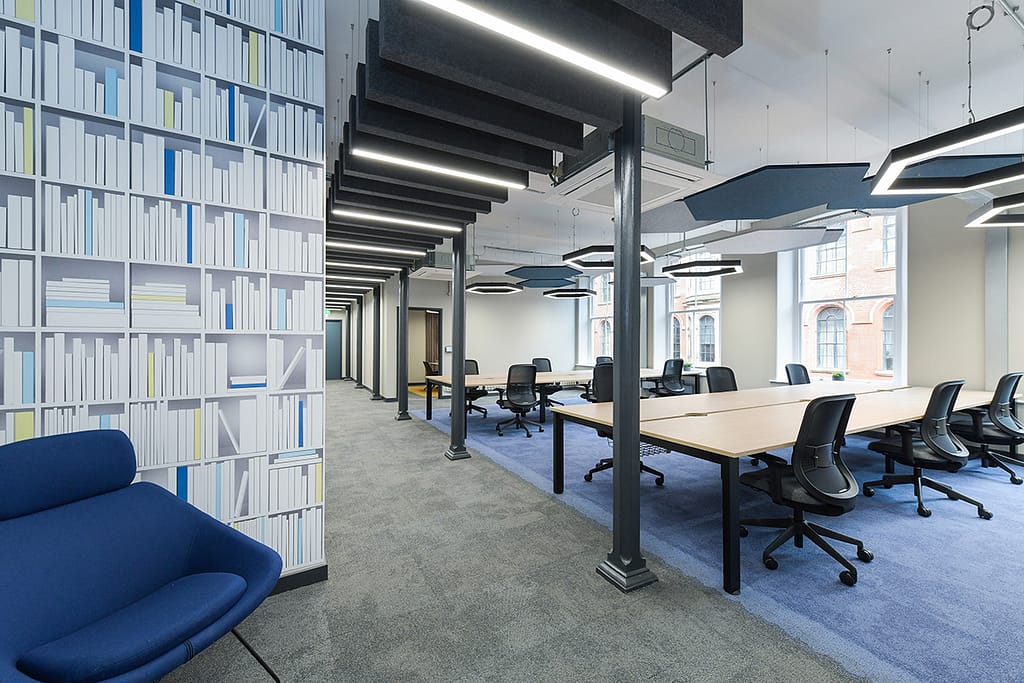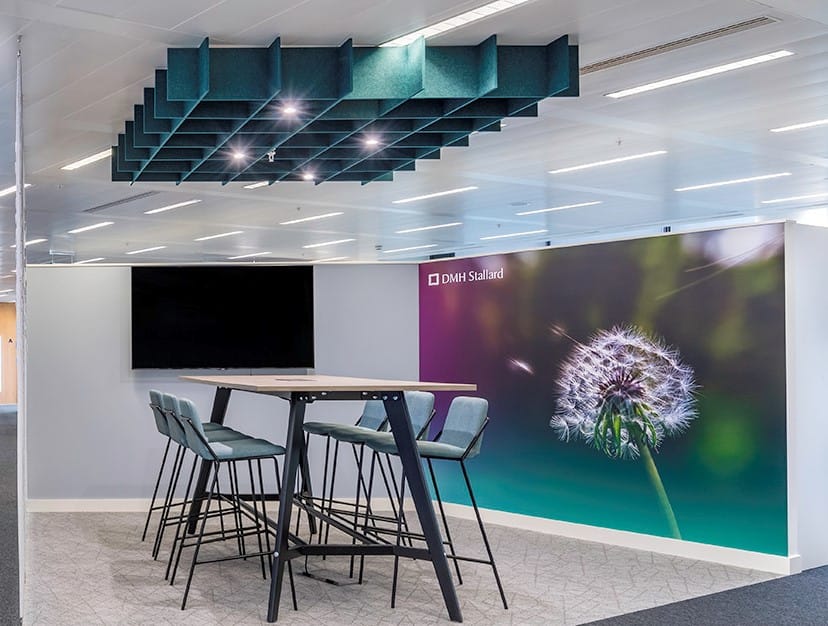The lighting in an office can have a significant impact on employee productivity and wellbeing. Poor lighting can cause eye strain, headaches, and fatigue, while good lighting can improve mood, reduce stress, and boost productivity. In this blog post, we will explore the best office lighting for employee productivity and provide tips for creating a comfortable and productive work environment.
Natural Light
Natural daylight or a light that mimics natural daylight, such as a cool white LED light, is generally considered the best lighting for employee productivity. This type of lighting provides a bright, crisp light that helps employees feel more alert and energised. Additionally, exposure to natural daylight has been shown to improve mood, reduce stress, and increase productivity.
However, it’s not always possible to have natural daylight in an office. In these cases, a cool white LED light can be a desirable alternative. Cool white LED lights have a colour temperature between 5000K and 6500K, which is like natural daylight. This type of lighting is often used in offices, as it provides a bright, neutral light that is easy on the eyes and helps improve concentration.
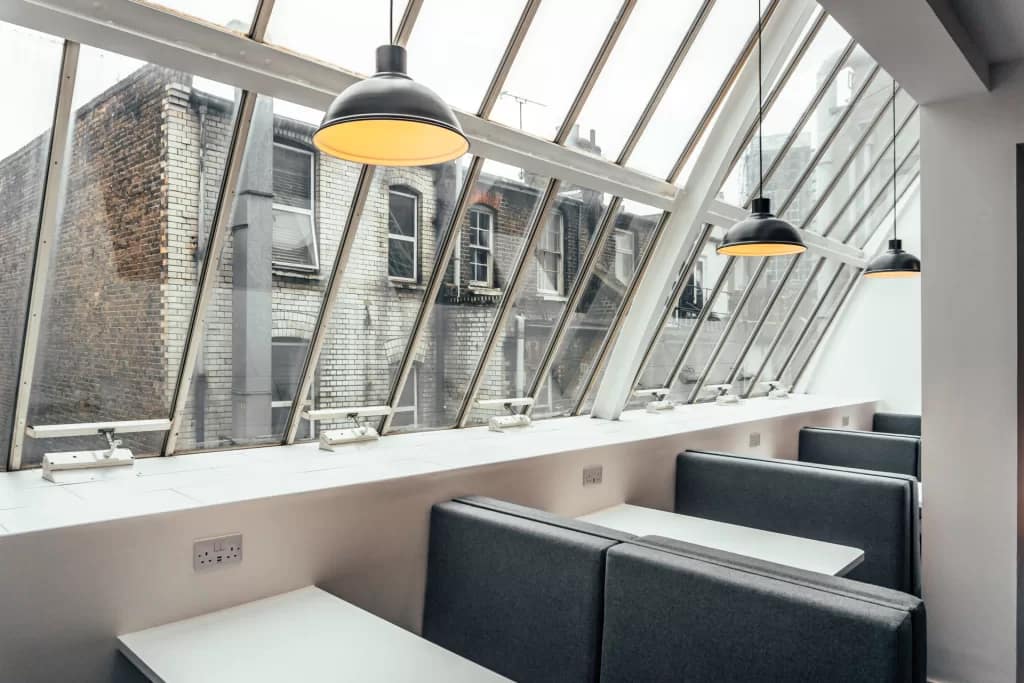
Adjustable Lighting
Adjustable lighting options are also important for employee productivity. Supplying dimming controls or other adjustable lighting options allows employees to customise their lighting preferences and create a comfortable work environment. For example, employees may prefer dimmer lighting later in the day when they are feeling more tired and need to relax their eyes. This is where circadian lighting can be a powerful tool for employee wellbeing and productivity.
Circadian lighting is a type of lighting design that aims to mimic the natural light and dark cycles that regulate our body’s internal clock. There are several ways in which circadian lighting can improve employee productivity:
Firstly, circadian lighting can help to regulate the body’s sleep-wake cycle, which can have a significant impact on energy levels and productivity. Exposure to blue-enriched light in the morning can help to reset the body’s internal clock, promoting wakefulness and alertness during working hours. Conversely, exposure to warmer, reddish light in the evening can help to promote relaxation and prepare the body for sleep, leading to better quality sleep and improved productivity during the day.
Secondly, circadian lighting can help to reduce fatigue and increase alertness, particularly during the afternoon slump. By providing the right kind of light at the right time of day, circadian lighting can help employees maintain their energy levels and focus throughout the day, leading to higher productivity and better job performance.
Task Lighting
The placement of lighting in the office is also crucial. Lighting should be evenly distributed throughout the space to reduce shadows and glare. Overhead lighting should be used in combination with task lighting, such as desk lamps or under-cabinet lighting, to supply adequate illumination for specific tasks.
Additionally, it’s essential to consider the type of work being done in the office when selecting lighting. For example, employees who spend most of their time working on computers may benefit from a light with a lower colour temperature to reduce eye strain. On the other hand, employees who need to focus on meticulous tasks may benefit from a brighter light.

Acoustic Lighting
Acoustic lighting is a type of lighting that combines sound-absorbing materials with LED lights to create a comfortable and efficient working environment. Acoustic Lighting reduces noise levels in a workspace which can lower levels of stress, fatigue and improve communication.
Overall, acoustic lighting can help to create a more comfortable and efficient working environment, which can lead to increased employee productivity.
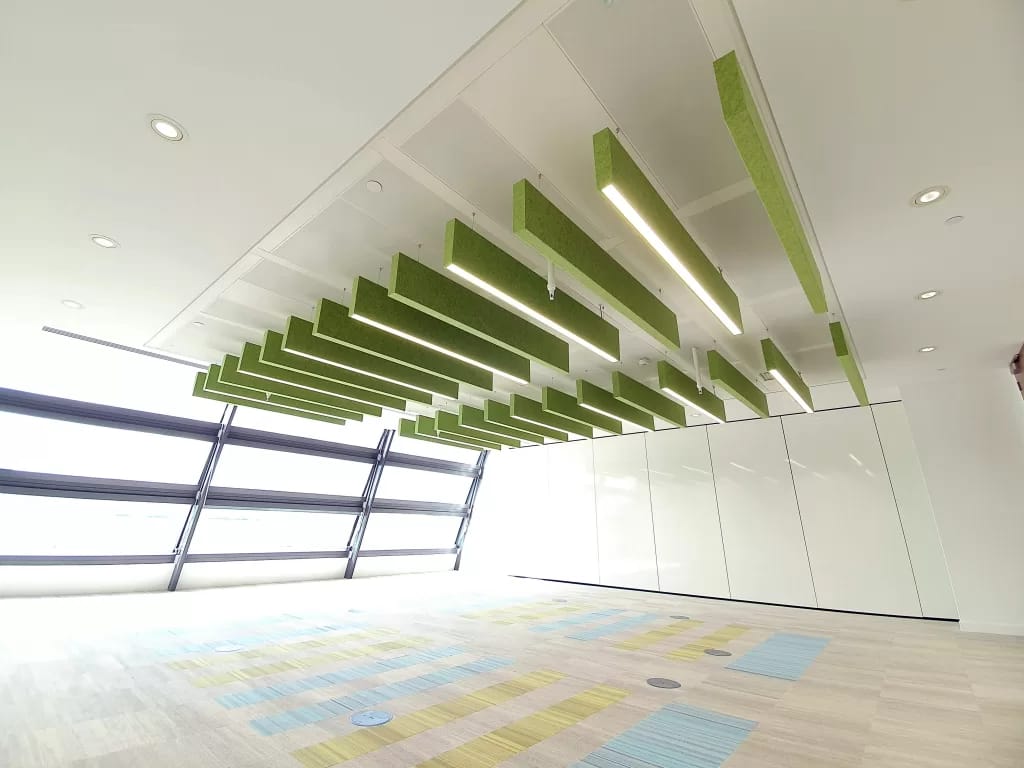
Biophilic Lighting
Biophilic lighting is a type of lighting design that uses natural elements, such as plants, wood and stone to create a more nature-inspired workspace. There are several ways in which biophilic lighting can improve employee productivity:
Firstly, biophilic lighting can improve mood and reduce stress levels among employees. Exposure to nature has been shown to increase positive emotions and reduce negative ones, such as anxiety and depression. By bringing elements of nature indoors, biophilic lighting can create a more calming and relaxing environment, promoting better mental health and higher levels of productivity.
Secondly, biophilic lighting can regulate the body’s circadian rhythms, which can help to improve sleep patterns and energy levels throughout the day. Exposure to natural light, especially in the morning, can help to reset the body’s internal clock and improve alertness and productivity during working hours. Biophilic lighting can mimic natural lighting conditions, providing the right kind of light at the right time of day, to help employees feel more energised and focused.
Finally, it’s crucial to gather feedback from employees and adjust the lighting accordingly. Different people have different preferences when it comes to lighting, so it’s important to consider their feedback and make changes as necessary. Encouraging employees to take breaks and step outside for some natural daylight exposure can also be beneficial.
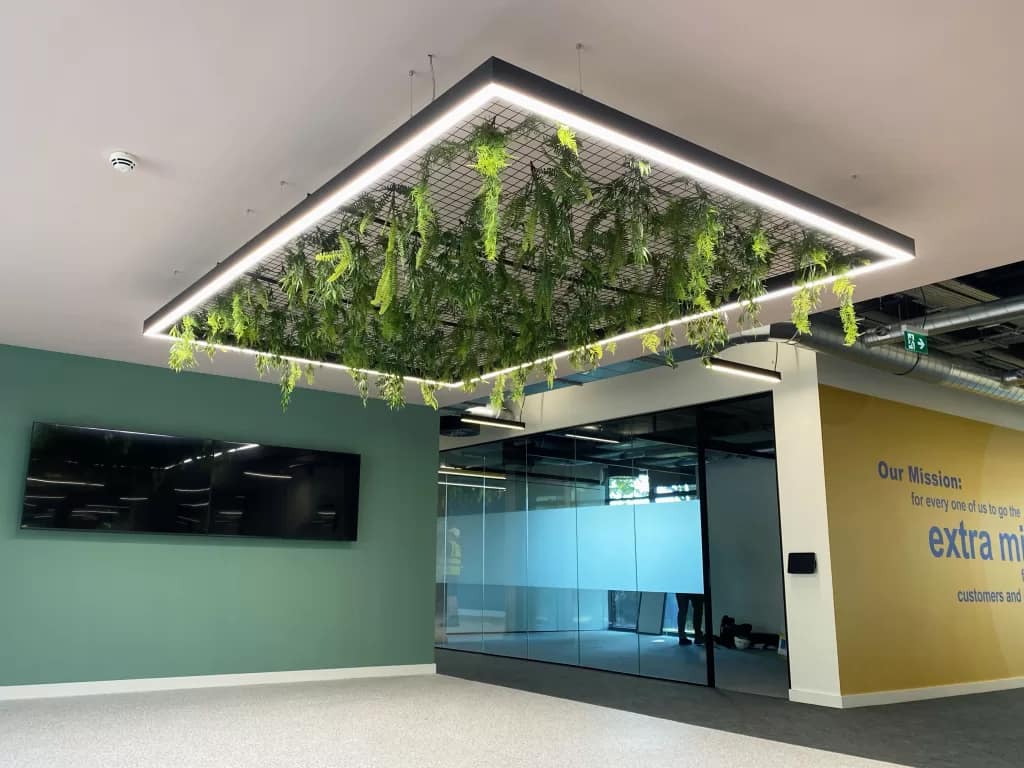
The best office lighting for employee productivity is natural daylight or a light that mimics natural daylight, such as a cool white LED light. Supplying adjustable lighting options, evenly distributing lighting throughout the space, and considering the type of work being done in the office are also important factors to consider. By creating a comfortable and productive work environment, employers can help their employees stay focused, energised, and productive throughout the day.
